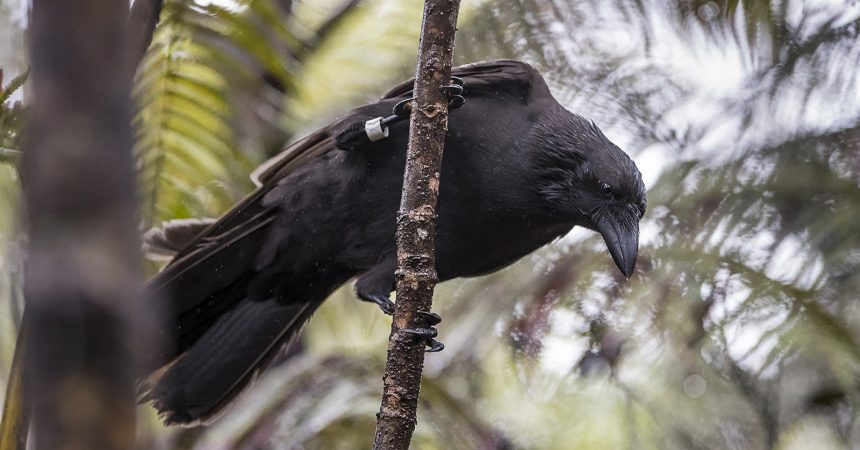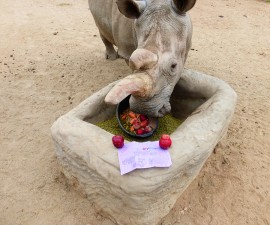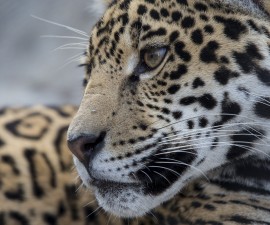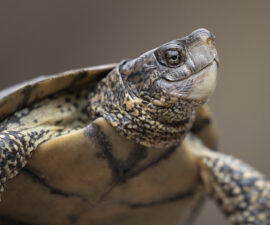If we could turn the clock back two decades, we would have little reason to be hopeful for the ʻAlalā, or Hawai’ian Crow. They seemed to be on the same trajectory of the other four corvid species in the Hawaiian Islands that have gone extinct since human contact. Sadly, a perfect storm of threats ranging from invasive predators, to habitat-destroying goats and pigs, to introduced disease, have brought many bird species in Hawai’i to near extinction and many more have been lost forever. But, as Margaret Meade is known for saying, a small group of people can change the world. That is the story I have to tell—how Herculean efforts by diverse and dedicated teams over the years have brought about a dramatic turnaround for the ʻAlalā. We dare to hope just a little more each day.
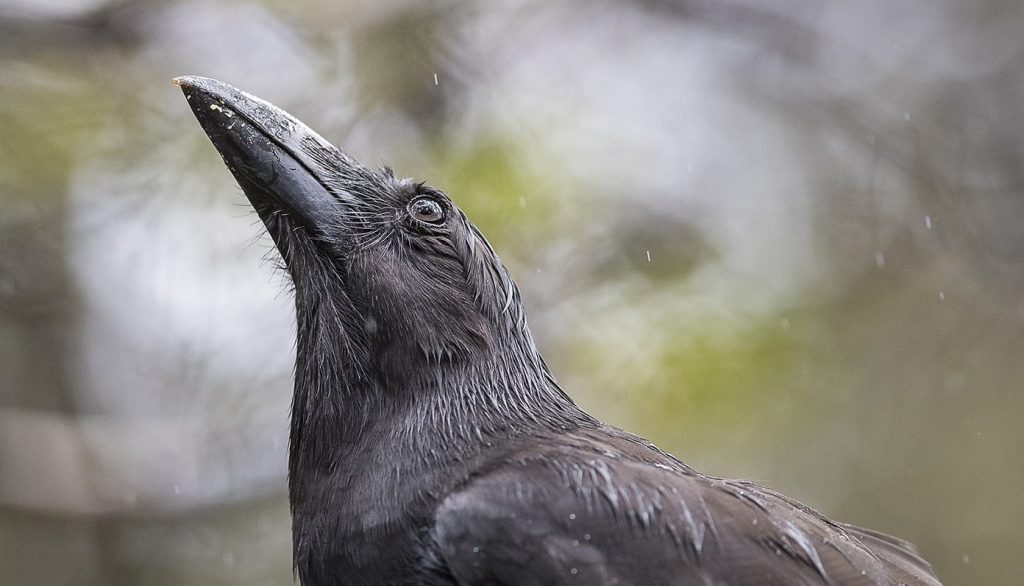
Fortunately, the people of Hawai’i did not want to lose this important part of their natural heritage, and communities, government agencies such as the State of Hawai’i and the U.S. Fish and Wildlife Service, and NGOs like San Diego Zoo Global (SDZG) all rallied to save the ʻAlalā from extinction. The ʻAlalā is important to native peoples and more recent immigrants alike, perhaps due to its brazen charisma. They are a crow, after all. They are full of personality. They’re intelligent too, and are one of the few species of birds known to use tools. The juveniles’ vivid, piercing blue eyes don’t hurt. As seed dispersers, the ʻAlalā is also important for the ecosystem. When they eat native fruits, the seeds passing through digestive tract are more likely to germinate. So, restoring ʻAlalā will help restore native plants.
Near the turn of the millennium it was all gloom and doom for the ʻAlalā. A noble but ultimately unsuccessful attempt to reintroduce ʻAlalā was aborted, and the last few in the wild either perished or were brought into conservation breeding centers and a breeding program was started. The founding population was just 9 birds. It seemed a long road ahead before there would be ʻAlalā flying free in the forests of Hawaiʻi again. But rather than give up, people rallied. SDZG manages the breeding program and today we have more than 125 birds. More importantly, now we have wild birds in the forests of Hawaii for the first time in nearly two decades.
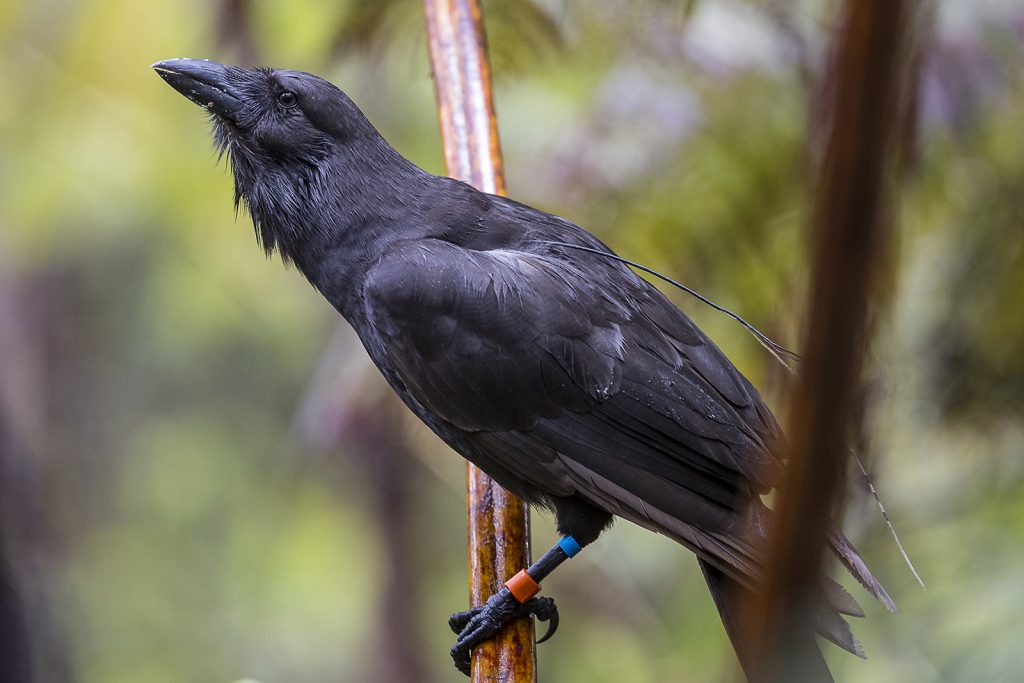
To get there was not easy, but shows what is possible, and hence is a good lesson for other species we are tempted to give up on. While the zoo was breeding ʻAlalā, partners in the State and Federal government were restoring the habitat: setting aside protected areas, removing invasive predators and non-native animals, and restoring native vegetation. After decades of careful planning and evaluation of scientific information, a prime release site (Pu’u Maka’ala Reserve) was selected and readied to receive ʻAlalā.
In late 2016 when we released the first five ʻAlalā, we had a devastating setback. Within days after release, three of them had died, two at the talons of the native Hawaiian hawk, or ‘Io, their natural predator. We retrieved the two survivors, aborted plans to release another half dozen, and the working group of partners put their heads together to find solutions. Since ‘Io are a native—and also endangered—species, released ʻAlalā would need to find a way to coexist with ʻIo as they had for millennia. We knew ‘Io could be a problem and had already planned for this threat. ʻAlalā were trained to recognize the ʻIo as a predator, sites were selected that had lower detections of ‘Io, and the habitat had a more suitable forest structure that the ʻAlalā can use to evade predation. So, we did not need to make dramatic changes, but adjusted our approach to give the ʻAlalā a better chance. We beefed up the antipredator training, chose a new release site, and decided to release more ʻAlalā more quickly, among other adjustments.
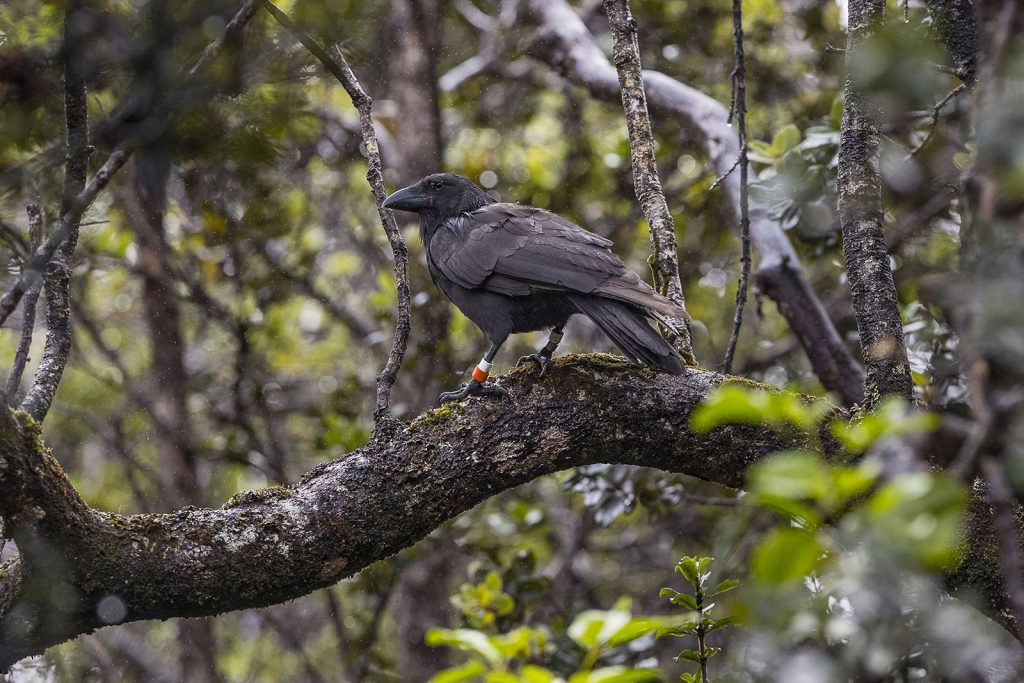
Fast-forward to Fall 2017 and we were ready to try again. With great trepidation, we opened the doors to the release aviary and watched nervously to see how our charges, reared in our breeding centers on Maui and Hawai’i Island, would deal with this novel environment. Would they meet the challenges, even those posed by the ‘Io? Fortunately, everything went beautifully. Monitored intensively by our dedicated field team, the ʻAlalā gradually began to explore their new environment, returning frequently to make good use of the supplemental food we provide. But with each passing day, they ranged a little farther and ate more of their natural diet of native fruits and insects. They also got a stay of execution from the ‘Io, and were not visited by ‘Io during the first couple of weeks. This gave them a little time to adjust to their new environment, strengthen their flight capabilities, and learn to be wild ʻAlalā. Later, when they did encounter ‘Io, they exceeded our expectations. Sometimes they would hunker down in the forest and alarm call, but other times they took a bolder approach and several of them flew over and mobbed the ‘Io, chasing it away.
Today, more than 6 months later, I am happy to report we still have all 11 released ʻAlalā alive and thriving in the wild. We are gearing up to release another dozen later this year. Will we meet with the same success? It’s hard to say. But we are on the right path now. And we are feeling, well, hopeful.
Author’s note: The ʻAlalā recovery program is led by a partnership between the U.S. Fish & Wildlife Service, State of Hawai`i Division of Forestry and Wildlife, San Diego Zoo Global, and other partners.
Ronald R. Swaisgood, Ph.D., is Brown Chair/Director of Recovery Ecology at the Institute for Conservation Research, San Diego Zoo Global.

